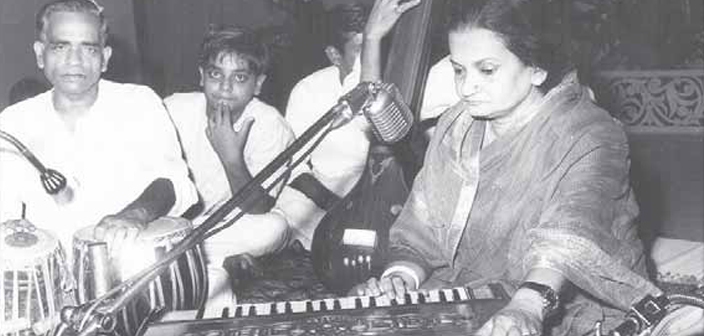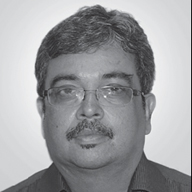On 29 November 2014, a unique ghazal concert Ghazal Harmony was held at Mumbai’s Nehru Centre auditorium. While it was led by senior artiste Pankaj Udhas and presented by well-known stage personality Salim Arif, the highlight was that it featured younger singers like Tauseef Akhtar, Runa Rizvi, Sudeep Banerjee, Pooja Gaitonde, Neha Rizvi and Shruti Pathak. “A new era has begun in the world of ghazals,” Udhas declared.
If one thought a decade ago that ghazals had died as a genre, there seems to be some sudden hope within the fraternity of late. Besides a large number of younger singers, there has been an increase in the number of festivals. While Khazana, organised by Udhas at Mumbai’s Trident hotel has become a regular annual feature largely comprising established artistes, newer events like Ghazal Bahaar are providing a platform to both middle-rung and upcoming artistes. The next edition of Ghazal Bahaar, to be held in Mumbai in January 2015, will feature Ashok Khosla, Chandan Das, Ghansham Vaswani, Radhika Chopra, Anurag Sharma and Tauseef Akhtar, among others. As Tauseef says, “The way things are going, ghazals are set to make a comeback in 2015.” Besides festivals, many one-off concerts are being held too. Udhas is doing a series of shows to promote his latest album Khamoshi Ki Awaaz, and recently, singer Sraboni Chaudhury had an event to mark the late Begum Akhtar’s birth centenary.
Only time will tell whether the coming year will bring back the ghazal movement. And even if there is a comeback, will it be as big as the wave one witnessed in the 1980s? Even though there are many newcomers and more events, the genre faces a few challenges. But before looking at them, it would be essential to understand the evolution of ghazals in the country.
A brief history of ghazal
In the pure sense, a ghazal consists of a series of rhyming couplets, where each couplet is independent of each other in meaning, but similar in structure. Each couplet is called a sher and the rhyming words are called the qafiya and radeef. The lines of the sher must have the same metre. If they do not have rhyming couplets and use the concept of free verse, the piece is called a nazm.
While ghazals have existed since the 12th century, it was only in the 18th and 19th centuries that they became popular among select audiences, thanks to classical poets like Mirza Ghalib, Mir Taqi Mir, Momin Khan Momin, Dagh Dehlvi and Bahadur Shah Zafar. Those days, ghazals were heard live in courts of kings or in private gatherings.
When music began to be recorded in the first half of the 20th century, artistes began recording ghazals too. They were even used in film music. While singers K.L. Saigal, Talat Mahmood, Lata Mangeshkar and Mohammed Rafi sang this form regularly, music director Madan Mohan became famous for his ghazal compositions like Yoon hasraton ke daag and Unko yeh shikayat hai (from Adalat) and Woh bhooli dastaan (from Sanjog).
Most ghazals were written in chaste Urdu and were thus admired more by those who understood the language thoroughly. Besides being used in films, they also found a place in non-film recordings. While Master Madan and Begum Akhtar earned a name in India, Amanat Ali Khan, Habib Wali Mohammed, Noor Jehan and Mallika Pukhraj recorded them in Pakistan.
From the 1960s onwards, newer styles found their way in films, and ghazal began being increasingly recorded in the form of non-film music. Concerts and private mehfils also provided a platform for singers, and during this phase, Begum Akhtar became a huge name in ghazals, and was the single biggest artiste in India, till she passed away in 1974. Simultaneously, Pakistan witnessed the rise of Mehdi Hassan, whose 1964 song Gulon mein rang bhare, written by Faiz Ahmed Faiz, became a rage. Soon, other singers like Rajendra and Nina Mehta in India, and Ghulam Ali in Pakistan, began giving regular concerts.
The ghazal wave
Till the mid-1970s, ghazal singers used traditional instruments like the harmonium, sarangi and tabla for accompaniment. But when Jagjit and Chitra Singh were promoted as the next stars on the ghazal horizon, the format started using other instruments like the guitar and keyboards. The phenomenal success of the couple’s 1976 album The Unforgettables, featuring the songs Baat niklegi toh phir, Sarakti jaaye rukh se naqaab and Raat bhi neend bhi, was said to be the turning point in the history of ghazals.
A few reasons can be attributed to the sudden craze for the genre. To begin with, many singers entered the fray. These included Talat Aziz, Udhas, Penaz Masani and Anup Jalota, who later began concentrating on bhajans. Secondly, instead of the complex poetry that the old-timers chose, the newer lot preferred simpler words by younger poets, with Jagjit himself playing a major role in reaching out to the masses.
While earlier ghazals focused more on classical styles, the genre now used instruments which made them sound close to film music. Music companies Music India and HMV went out of their way to promote ghazals. Most important, the period from 1977 onwards saw a decline in quality of Hindi film music, and audiences switched to ghazals as an alternative.
The ghazal wave lasted almost a decade. Plenty of new albums were released, and concerts were filled to capacity. Bhupinder-Mitali, Chandan Das, Rajkumar Rizvi, Ahmed Hussain-Mohammed Hussain and Hariharan also came in, and there was special interest in the music of old-timers Vithal
Rao and Madhurani. Shanti Hiranand and Rita Ganguly carried forward the legacy of their guru Begum Akhtar, and Indian audiences got exposed to Pakistani singers like Farida Khanum, Iqbal Bano and Nayyara Noor.
Why the decline?
Sadly, the glory days didn’t last. Too many singers tried to cash in on the wave, and in a bid to reach out even further to the masses, quality was adversely affected. The joke doing the rounds was that anyone with a harmonium and a shawl called himself a ghazal singer.
With melody returning to Hindi film music in the late 1980s and early 1990s, thanks to composers like Anand- Milind and Nadeem-Shravan, audiences went back to the movies, and ghazals took a back seat. Some new singers like Roopkumar and Sonali Rathod, Somesh Mathur and Mohammed Vakil came in, and Sufiana singers Nusrat Fateh Ali Khan and Abida Parveen sang ghazals too. But overall, the genre went out of fashion. When music videos became big in the mid-1990s, the focus was on Indipop, and ghazals got only a small amount of airplay. On the concert scenario, Jagjit and Udhas were the only singers who drew packed halls. And that’s something that continued till a couple of years ago, till Jagjit’s death in 2011.
Hope of revival
With this background in mind, it is heartening that so many youngsters are active today. Yet, they face a few challenges. To begin with, younger audiences do not understand the nuances of ghazals the way the earlier ones did, and there is no concrete effort to educate them either. Secondly, music companies are by and large not promoting the genre, and even the number of new releases is low. Thirdly, the masses continue to be obsessed with Bollywood.
The heartening thing, of course, is that the level of activity is increasing slowly but steadily. Even if one doesn’t see a wave, the water is flowing in the right direction.


